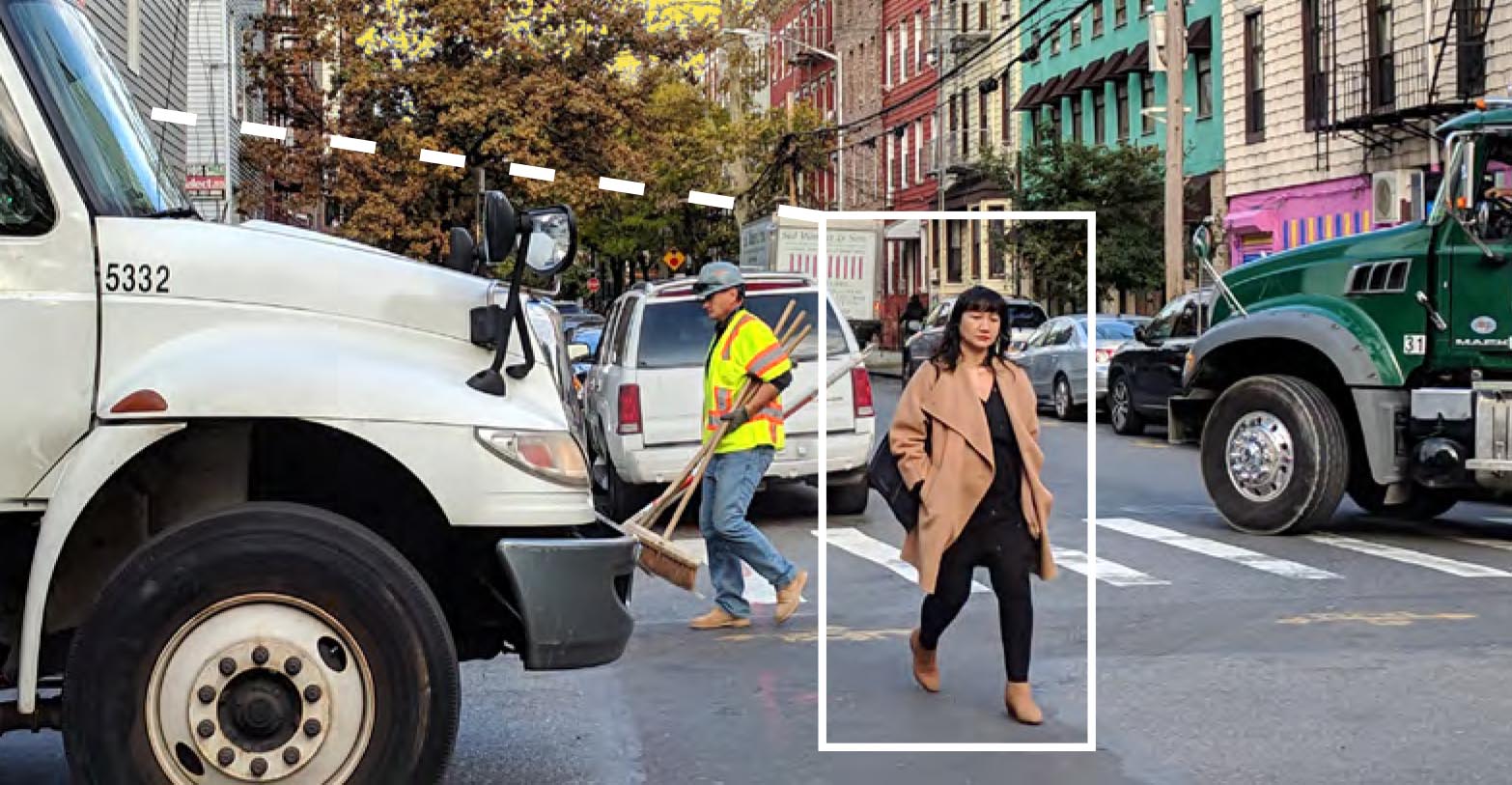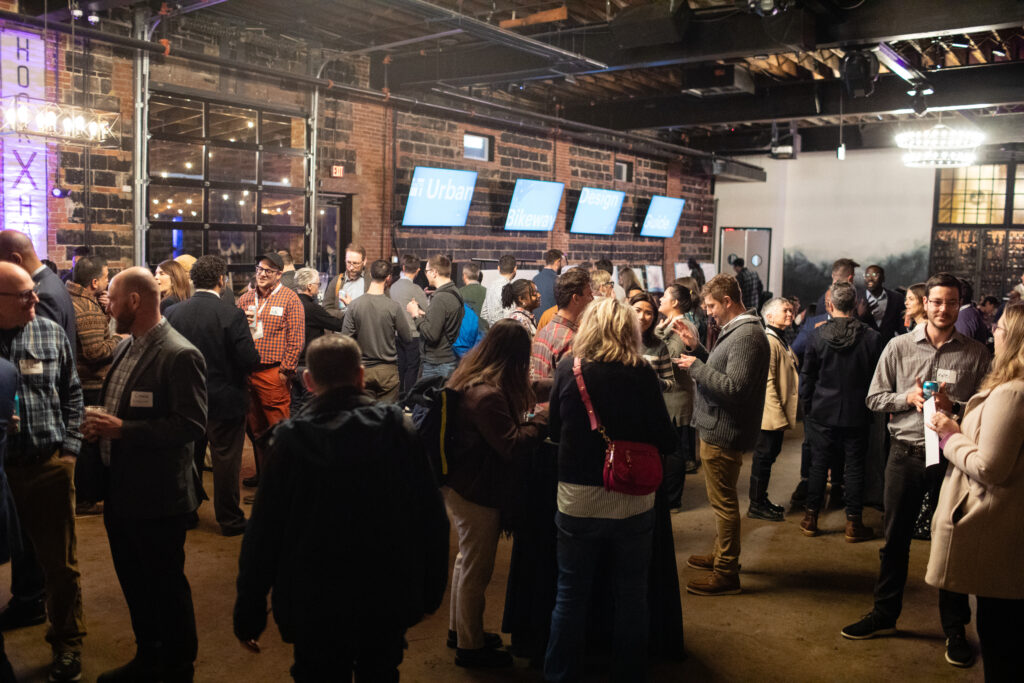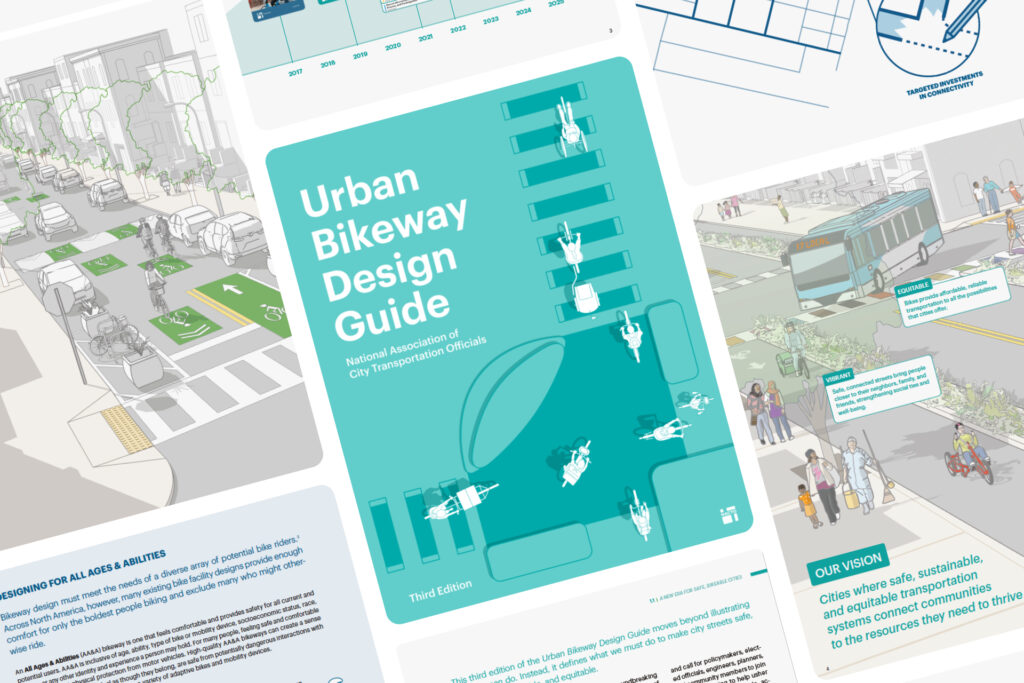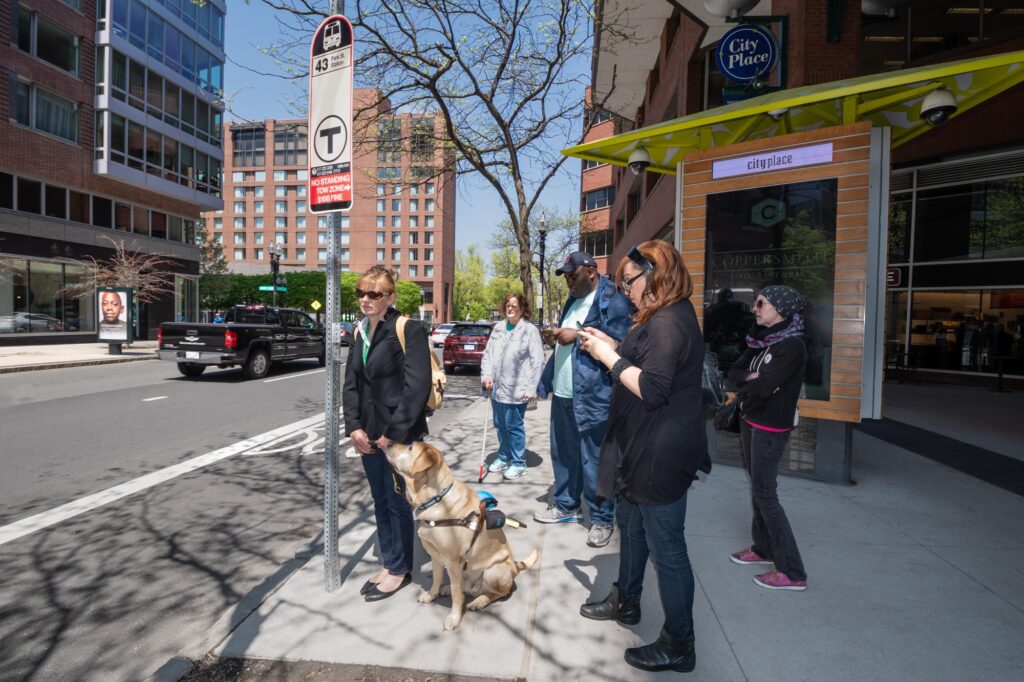Vehicle Designs Currently on Market but Not in Widespread Use Can Improve Driver Visibility and Street Maneuverability, Saving Lives through Fewer and Less Severe Crashes
The National Association of City Transportation Officials, an organization that represents 63 cities and 11 transit agencies in North America, and the U.S. Department of Transportation Volpe Center today released Optimizing Large Vehicles for Urban Environments, a pair of in-depth reports that detail the effects of vehicle design on street safety, and the opportunities that public agencies—as significant purchasers of large vehicles—have to reduce traffic fatalities with improved vehicle design.
Large vehicles—including fire trucks, waste management vehicles, and freight trucks—count for a disproportionate, and growing, number of fatalities on U.S. streets. Despite making up only 4% of the U.S. vehicle fleet, trucks account for 7% of all pedestrian, 11% of all bicyclist, and 12% of all car and light-truck fatalities. Over the past year, even as overall traffic fatalities slightly declined, fatalities involving large trucks increased 9%.
Researchers concentrated on the opportunities available to cities from new procurement strategies for large vehicles and found that:
- Accommodating the largest vehicles on the street—often emergency response vehicles or municipal refuse vehicles—prevents cities from redesigning streets for safer speeds and reduced crossing distances. Even as street designs with narrower lanes, smaller turning radii, and decreased crossing distances are shown to increase street safety, larger vehicles requires wider lanes, larger turning radii, and significant space to maneuver and park, preventing street designers from making street improvements that improve safety for everyone.
- Smaller, more maneuverable emergency response trucks often have similar, or better, capabilities than the most common trucks on U.S. streets today. Aerial ladder fire trucks used in major European and Asian cities can reach just as high, despite being only two-thirds as long and having only half of the turn radius as common American models. Some models of pumper fire trucks are up to 30% smaller, and have a turn radius up to 50% less than more typically procured models.
- Trucks with improved direct vision can markedly decrease operator reaction time: up to 50% faster than through indirect vision (mirrors, backup cameras, etc.), with minimal additional cost. When tested in a simulation, more than half of distracted drivers in traditional cabs struck a pedestrian, while only 12% of high-vision cab drivers did. High-vision truck cabs cost 0-5% more than conventional cabs—costs that may be recouped over time with decreased insurance and crash liability claims.
- Many design elements that improve driver visibility can be retrofitted onto existing fleets, enhancing safety more rapidly than typical vehicle replacement cycles. Peep windows, teardrop windows, and reduced window tinting can generally be retrofitted onto existing vehicles, providing immediate safety benefits.
- Advanced Driver Assistance Systems (ADAS) on the market—which use cameras, radar, and other sensors—can significantly mitigate crashes with other vehicles, but are inconsistent at detecting and responding to pedestrians and bicyclists on city streets. The inconsistent nature of ADAS systems can also lead to over-reliance on the part of drivers, slowing reaction time.
- More specialized emergency response operations may allow for further improvements in street design, as well as improved emergency response times. Multiple cities studied use motorcycles and/or bicycles in lieu of or to supplement full-size fire and ambulance trucks for medical calls. Many cities likewise use smaller equipment in selected congested or constrained areas, enabling cities to redesign streets in those areas using best street design practices for safe speeds and improved pedestrian and cyclist visibility.
“The U.S. has the highest traffic fatality rate in the developed world, and large vehicles make up a disproportionate and growing number of those fatalities,” said Linda Bailey, Executive Director of NACTO. “Choosing vehicles with safer designs is a simple and proven step that any city can take to help stem the rising epidemic of traffic deaths on our streets.”
“U.S. DOT Volpe Center is proud to partner with cities across the country to promote safer roads for pedestrians and bicyclists,” said Alexander K. Epstein of the U.S. Department of Transportation Volpe Center. “Partnerships like these ensure Volpe’s work—including research into large vehicle safety technologies—maximizes the public good by matching transportation innovations to the dynamic contexts of real-world communities.”
“In our research, we found that it’s possible to have the best of both worlds: smaller, more maneuverable trucks, with the same capabilities as larger, less nimble models,” said Jonah Chiarenza of the U.S. Department of Transportation Volpe Center. “As cities look at new models in the life cycle of replacing their fleets, this win-win dynamic can help make for safer streets.”
“From waste disposal and utility trucks to delivery vans, large vehicles provide many of the basic services our communities depend on,” said Tom Maguire, Sustainable Streets Director at the San Francisco Municipal Transportation Agency (SFMTA). “While large vehicles are a small fraction of vehicles on our streets, they are disproportionately involved in fatal crashes. The SFMTA is proud to support efforts that will identify simple, often retrofittable, technology and design opportunities to increase large vehicle safety and prevent unacceptable fatalities.”
“As emergency services mandates grow and change, fire departments cannot continue to meet today’s emergencies with yesterday’s equipment,” said Mike Myers, Fire Chief of Portland, Oregon. “This report provides one of the first comparative looks at fire fighting apparatuses on the market. It is a great resource for fire departments and city halls across the country.”
“Trucks and other large vehicle are a fundamental part of Chicago, and embracing the technologies and designs that make them safer is a key piece of CDOT’s Vision Zero strategy.” said Rebekah Scheinfeld, Commissioner of the Chicago Department of Transportation. “From the recent adoption of life-saving truck side guard requirements to exploring the opportunities identified in this research, Chicago DOT is committed to making Chicago’s streets safer and better.”
“IIHS research demonstrates that technology is preventing crashes in the passenger vehicle fleet, and we have every reason to expect significant benefits for buses and large trucks,” said David Zuby, IIHS Chief Research Officer. “Improvements in road design and vehicle design, enforcement of traffic laws, and advanced technologies will all play a role in making streets safer for all road users.”
“Vision Zero is a fundamental shift in how communities approach safety and mobility, requiring public sector and advocacy leaders to think in new ways about how to make our streets safer,” said Leah Shahum, Executive Director of the Vision Zero Network. “By identifying the opportunities and limitations of technology to reduce traffic fatalities and injuries, and providing readily available examples of alternative vehicle designs that can improve driver vision and reaction times, this report offers Vision Zero practitioners new tools for saving lives now.”
Researchers from the USDOT Volpe Center authored Optimizing Large Vehicles for Urban Environments with pooled funding from six U.S. cities: Boston, Chicago, Los Angeles, San Francisco, Seattle, and Washington D.C.
The full reports can be accessed online:
https://nacto.org/optimizing-large-vehicles/
###
About the National Association of City Transportation Officials (NACTO)
NACTO is an association of 74 major North American cities and transit agencies formed to exchange transportation ideas, insights, and practices and cooperatively approach national transportation issues. The organization’s mission is to build cities as places for people, with safe, sustainable, accessible, and equitable transportation choices that support a strong economy and vibrant quality of life.
Contact:
Alexander Engel | [email protected] | 646-324-2919



